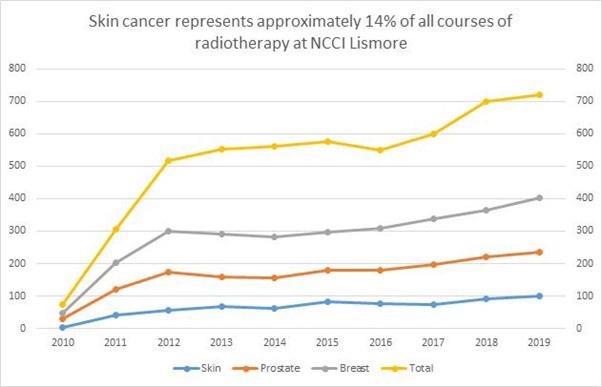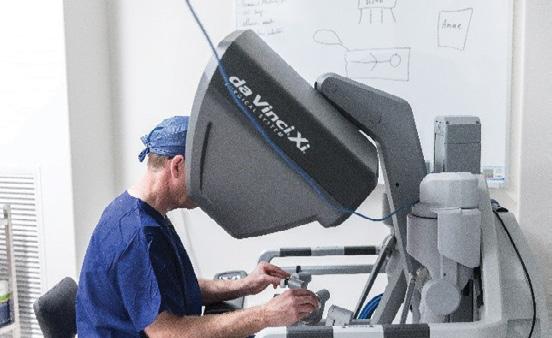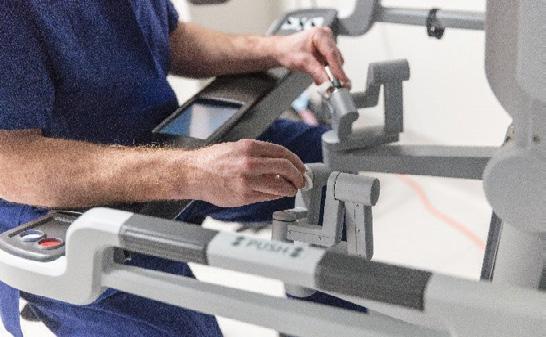
6 minute read
Radiotherapy for skin cancer – an overview
from NorDocs Autumn 2021
by NRGPN
by Dr Shreya Armstrong
Epidemiology
Advertisement
Skin cancer accounts for the largest number of cancers diagnosed in Australia each year, with more non melanoma skin cancer (NMSC) diagnosed each year than all cancers combined1. The common NMSCs include4 basal cell carcinoma (BCC) and squamous cell carcinoma (SCC), with 35% increase in age standardized incidence of BCC and double the incidence of SCC from 1985 to 2002. Rarer NMSCs include but are not limited to Merkel cell carcinoma and dermatofibrosarcoma, with 900 new cases diagnosed in Australia in 2016, accounting for 0.7% of all cancers diagnosed. Australia also has the world’s second highest incidence of melanoma, with 35 new cases a year per 100,000 Figure 1 (above) are aggressive neuroendocrine tumours with high propensity for regional and distant metastases. MCCs are exquisitely radiosensitive, with two meta-analyses confirming the benefit of adjuvant radiotherapy, which is associated with significant improvement in locoregional control and overall survival compared to surgery alone. MCC may also be managed with definitive radiotherapy alone, with reported in-field control rate of 75%8 .

For melanoma, adjuvant radiotherapy may be considered for patients at high risk of local or regional recurrence. Randomised evidence has shown the addition of adjuvant radiotherapy for tumours with high risk features is associated with a statistically significant reduction in locoregional relapse9 .
people, accounting for 10% of all cancers diagnosed1 .
Treatment Options for Skin Cancer
The treatment options available for skin cancer includes topical therapies, surgery, radiation therapy, systemic therapy (including chemotherapy, immunotherapy and/or targeted therapy), either alone or in combination. The ultimate choice of treatment depends on the tumour type, tumour extent, patient fitness and patient preference.
Radiotherapy for Skin Cancer
For NMSCs, radiotherapy can be used as the sole definitive treatment modality, or in the adjuvant setting for tumours with high risk features to reduce the risk of local recurrence (see table below). Definitive radiotherapy may be considered for patients who are not a surgical candidate, present with an inoperable lesion, or where excision would produce loss of function or unacceptable cosmesis. Randomised data comparing different treatment modalities are lacking, however large series data report local control rates with radiotherapy in the order of 90-95% and excellent or good cosmesis in >90% of patients3-7. Merkel cell carcinomas (MCCs)
Indications for post-operative radiotherapy for NMSCs (adapted from eviQ)2 Absolute
• T4 disease • Positive margins, where further surgery not feasible • Large nerve perineural spread • Recurrent disease
Relative (consider when 2 or more present) • T2 or T3 • Poorly differentiated
• Close margins (<2mm) • ≥6mm depth of invasion • Lymphovascular invasion • Immunosuppression • Pathological perineural invasion (nerve diameter ≥0.1mm) • High risk tumour site (e.g. preauricular, ear, temple, non-hair bearing lip)
Management of Skin Cancer at North Coast Cancer Institute (NCCI)
At NCCI, skin cancer is the 4th most common tumour type treated.
The location, size, depth and overall volume of the tumour dictates which modality of radiotherapy is most suitable. According to the clinical parameters, patients at NCCI may be treated using superficial radiation therapy (SXRT) or external beam radiotherapy (EBRT).
SXRT is used to treat small tumours in eloquent and/or technically challenging locations such as lesions near the eye or nose. Majority of skin cancers are treated using EBRT, including superficial tumours that are not suited for SXRT and for tumours where larger and more complex volumes require treatment.
Technological advances in radiotherapy mean that complex surfaces such as scalp or regional lymph nodes can be treated at NCCI using modern EBRT techniques such as intensity modulated radiation Figure 2 (above) therapy (IMRT) or volumetric modulated arc therapy (VMAT). These techniques allow for a sophisticated delivery whereby the high doses of radiation can be delivered to clinical regions at risk whilst minimizing unnecessary side effects.
Radiotherapy dose to healthy tissues
Radiotherapy referrals to NCCI are received either directly (via general practitioners, surgeons or dermatologists), or more complex cases are discussed and referred through a multidisciplinary team meeting (MDT) pathway. Our local MDM is held fortnightly, and typically attended by surgeons, radiation oncologists, medical oncologists, pathologists and radiologists. We welcome the involvement of general practitioners at the meeting, which can attend either physically or virtually at Lismore Base Hospital. Figure 1 (opposite page) illustrates a series of clinical photographs of a patient with multiple NMSCs prior to radiotherapy in the top row, followed by a series of clinical photographs following a course of definitive radiotherapy (using SXT), showing complete clinical response.
Figure 2 (above) illustrates a complex radiotherapy plan using VMAT technique for patient with high risk cutaneous SCC with pathological lymph nodes in the left neck. The blue and green highlighted areas represent the differential dose prescription to the overall volume, with a higher radiation dose prescribed to the pathological macroscopic neck nodes.

Dr Shreya Armstrong has joined Drs Patrick Dwyer, Julan Amalaseelan and A/Prof Tom Shakespeare at the North Coast Cancer Institute. Shreya completed her specialist training in Radiation Oncology in 2014, having undertaken the first two years of training in New South Wales at Newcastle Calvary Mater Hospital and Lismore Base Hospital, before going on to Royal Brisbane and Women’s Hospital and Princess Alexandra Hospital. She subsequently undertook the Windeyer Fellowship at Mount Vernon Hospital in the United Kingdom specialising in brachytherapy for urological and gynaecological malignancies. She has had several papers published and has presented at clinical research conferences both nationally and internationally. Shreya has a special interest in cutaneous, central nervous system, gynaecological and urological malignancies, as well as palliative radiotherapy for all tumour sites. She consults at the outpatient clinic at Lismore Base and at the soon to be established radiation outpatient clinic at Byron Central Hospital. Shreya returned to the beautiful North Coast having been impressed by the area and its community when she first came as a registrar. She can be contacted through the NCCI or at Shreya.Armstrong@health.nsw.gov.au or mobile on 0428 128 436


Dr Erlich Sem
BMBS, MD, FRANZCOG (QLD) Advanced Robotic and Laparoscopic Surgeon, Obstetrician and Gynaecologist
Dr Erlich Sem specialises in minimally invasive approach for:
• Hysterectomy • Myomectomy • Excision of Endometriosis with preservation of pelvic organs • Ovarian Cystectomy/
Oophorectomy • Division of Adhesion • Pelvic Organ Prolapse Repair
To arrange an appointment with Dr Erlich Sem, contact: Queen Street Specialist Suites 138 Queen Street, Southport QLD 4215
Gold Coast Private Hospital 14 Hill Street, Southport QLD 4215 P 07 5530 0300 | F 07 5530 0646 goldcoastprivatehospital.com.au
A Fact Sheet by Dr Erlich Sem

Leading Gold Coast Private Obstetrician and Gynaecologist Dr Erlich Sem provides the most up-to-date Robotic Surgical options for patients with Gynaecological conditions, including: • Endometriosis • Tubal Reanastomosis • Colpopexy with hysterectomy • Myomectomy
What are the benefits of Robotic Surgery?
The system allows the surgeon’s hand movements to be scaled, filtered and translated into precise movements of micro-instruments within the operative site. The robotic instruments are “wristed” and have greater range of motions compared to human hands. These improved ergonomics helps to overcome the limitations of traditional laparoscopy. The surgeon’s vision is greatly enhanced with 3D and high definition camera system, allowing better identification of pathology, such as endometriosis. These improvements are associated with reduced surgical time, improved and safer dissection of delicate tissues and less post-operative pain.
How is it performed?
Robot-assisted surgery mimics the surgeon’s hands with robotic arms performing scaled-down, tiny movements within the body. The surgeon remains 100 percent in control of the operation, but the robot provides optimised 3D vision, magnification and motion tremor control, allowing the surgeon to operate high-tech instrumentation with greater dexterity and precision. The surgeon guides the procedure from a master console which controls robotic arms with attached surgical instruments.


Is there additional cost?
For most insured patients, there is no difference in cost when compared to standard laparoscopic approach.










